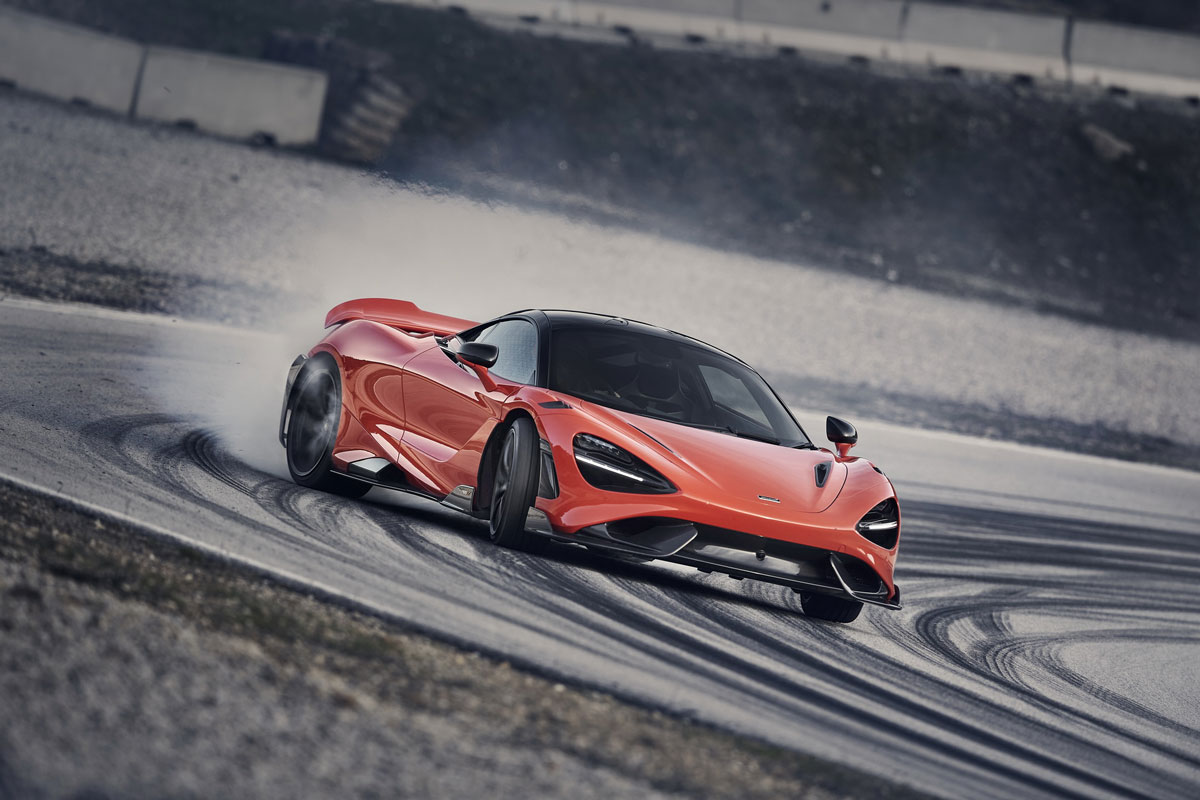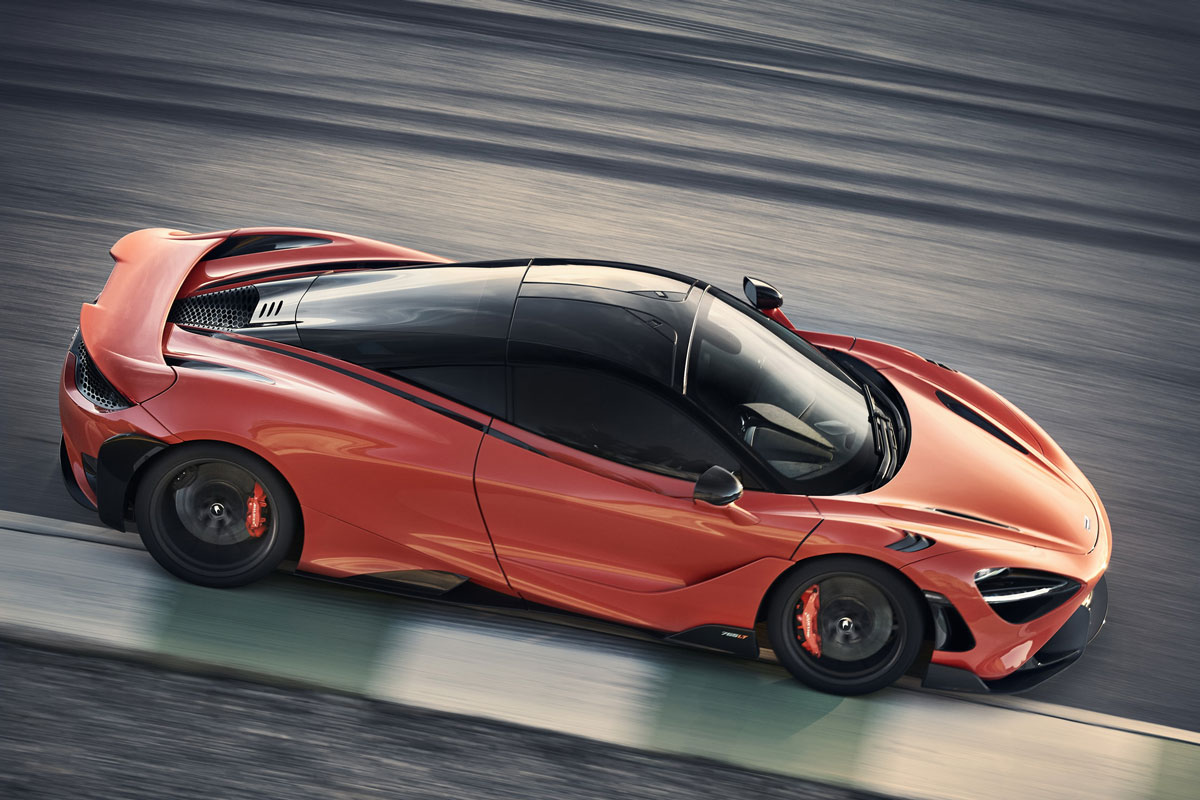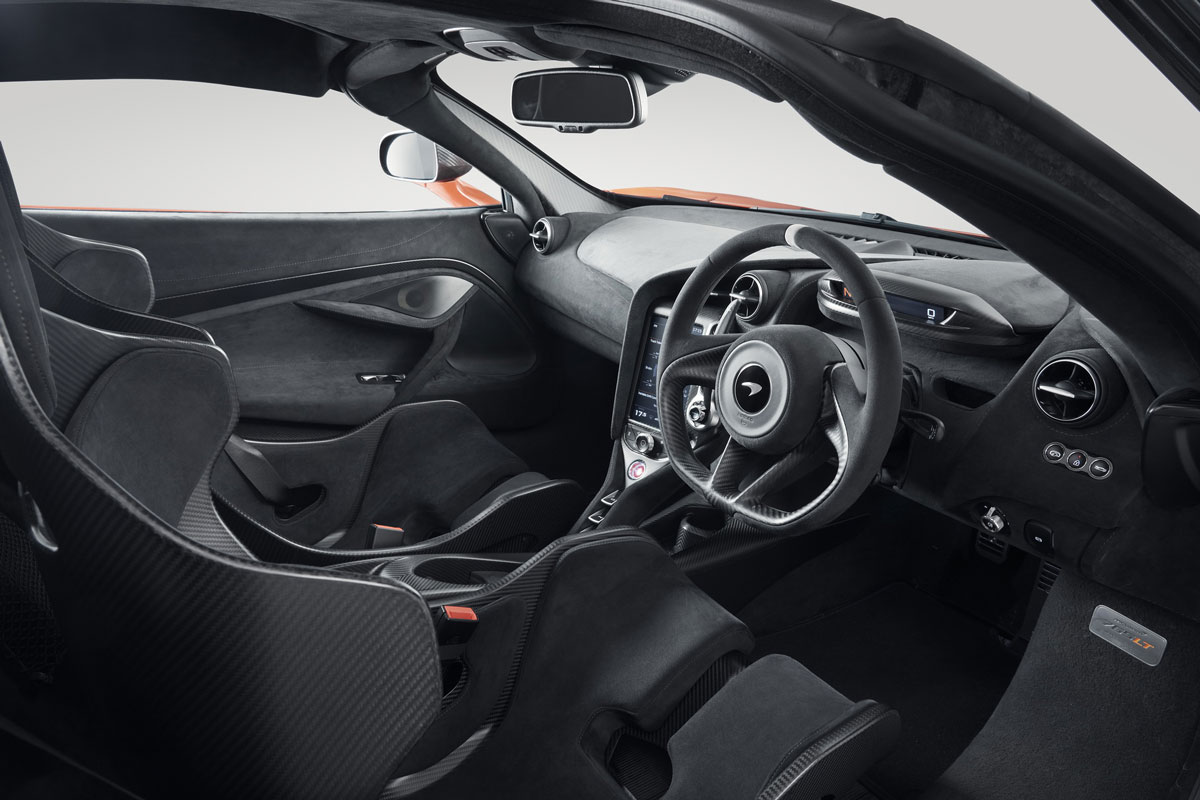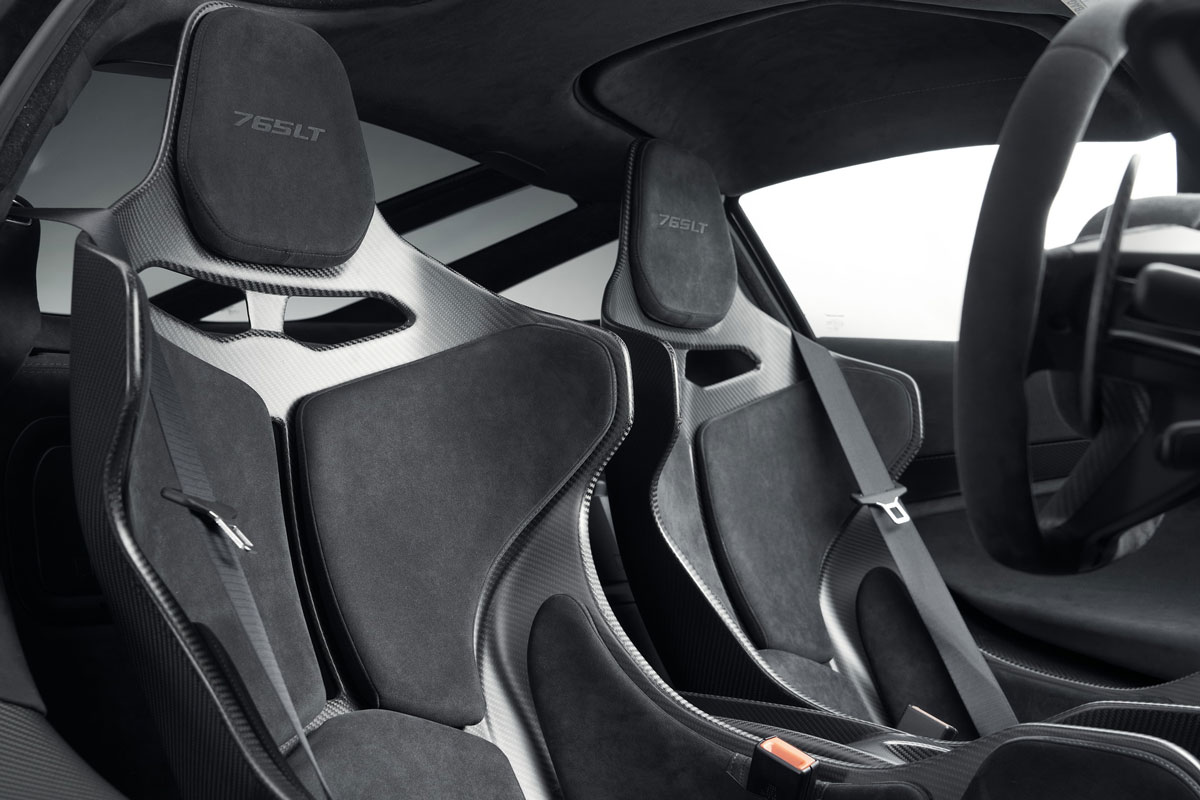Most spectacular car reveals of the cancelled Geneva Motor Show
The Geneva Motor Show is one of the world’s most illustrious and anticipated events on the auto calendar. For 2020, organisers and car companies had to be a little more creative with their launches due to the threat of coronavirus spreading.
While officials took a raincheck on major gatherings, the show still forged ahead with manufacturers live streaming their latest concepts and models for the world to see online. The glitter and flowing champagne may have been missing but it was more than made up for with the high calibre of cars that set the tone for an exciting new decade.
McLaren 765LT




One of the most talked about debuts of this year’s Geneva contingency is the stunning McLaren 765LT. More than just a face-lifted 720S, the 765LT is more of an evolution of the already-capable supercar hailing from the McLaren Super Series.
The ‘LT’ designation stands for ‘Longtail’ – a signature of McLaren’s extended rear bodywork allocated to their enhanced performance cars. The ‘765’, meanwhile, indicates the car’s revamped power output, which now clocks in at 563kW.
The British sports-car maker didn’t stop there though. A drastic weight reduction program was applied to the new 765LT, which took 79kg off the 720S – a car which was already light at 1,229kg. Helping to achieve this feat is an extensive use of carbon fibre throughout the car’s body. The glass used on the windscreen is also thinner while the rear engine window is polycarbonate. Even the brakes have gone on a diet with high-performance carbon ceramic stoppers borrowed from the flagship McLaren Senna and forged alloy wheels with titanium bolts.
On the performance front, the 765LT will use an upgraded version of their proven twin-turbo 4.0-litre V8 engine, which now develops 563kW of power and 799Nm of torque. Mated with a seven-speed dual-clutch transmission with optimised gearing, the car can now shift gears faster by 15% when compared to the 720S. This essentially equates to quicker lap times and a 0–100km/h sprint in 2.7 seconds before topping out at 330km/h.
Only 765 examples of the 765LT will be produced with pricing soon to be announced.
BMW Concept i4
BMW’s faith in an electric future was evident this year with the unveiling of their i4 electric car. The production version is due to commence manufacturing in 2021. So ahead of that, the Bavarian car maker showcased its near-production version, which features most of the underpinnings of the final product.
Under the sleek Frozen Light Copper paintwork resides a single electric motor driving the rear wheels via the company’s latest eDrive technology, which will also feature in the upcoming iNext and iX3. Power output is rated at an impressive 390kW and is further helped by a high-voltage battery pack with an 80kWh capacity – enough to give the car a range of 600km on a single charge across the WLTP cycle.
Every detail on the exterior is designed to minimise drag and maximise aerodynamic efficiency. The wheels are predominantly closed in order to increase air flow, while the massive signature BMW kidney grille is now closed off since electric motors don’t require an intake. Out back there’s a diffuser but a notable absence of exhaust tailpipes.
An iDrive selector and seat memory buttons made from crystal add a touch of class. Selecting a drive mode (Core, Sport or Efficient) with the former will induce a special sound profile into the cabin, complements of renowned composer Hans Zimmer.
Porsche 911 Turbo S
The 911 name is fabled among generations of sports-car enthusiasts and in 2020, the 992 continues that rich legacy with the arrival of the latest Porsche 911 Turbo S.
Debuting in both Coupe and Convertible options, the 2021 911 Turbo S takes a more aggressive approach to boosting the performance of the standard Carrera model. On the outside, there’s a new front bumper with subtle tweaks. The side profile also sees the addition of air intakes to feed the turbo engine, but it’s out back where there’s theatrics to see: a retractable rear spoiler rises to add downforce when the car begins to move at speed.
Driving the Turbo S is Porsche’s revised twin-turbo 3.8L flat-six engine, which now develops a formidable 478kW of power and 800Nm of torque – up 51kW and 50Nm from the standard Carrera. The engine is paired with Porsche’s proven eight-speed dual-clutch automatic transmission, which helps the car get to 100km/h in 2.7 seconds via an all-wheel-drive system before topping out at 330km/h.
Pricing for the Turbo S will start at A$473,900 for the coupe and AU$494,900 for the cabriolet when they arrive later this year.
Alfa Romeo Giulia GTA
For a good while, Alfa Romeo’s Giulia Quadrifoglio was the benchmark for modern performance sedans. It once held the title as the fastest sedan around the Nürburgring so it was never slow to begin with. That was roughly four years ago though, and today, the Giulia sees its latest evolution in the form of not one but two limited-edition high-performance variants – the GTA and GTAm.
Based on the first Giulia GTA, created in 1965, the new GTA twins feature an Autodelta-tuned version of the Quadrifoglio’s 2.9-litre V6 bi-turbo engine, which now develops 402kW – an increase from the base model’s 375kW. When paired with a dedicated launch system, the Giulia GTAm can dispatch the 0–100km/h sprint in 3.6 seconds.
Other areas of improvement include plenty of weight-saving measures across the GTA and GTAm. The bonnet, drive shaft, roof, front bumper, wheel arches and rear arch inserts are all made from carbon fibre. There’s also a carbon diffuser out back. Completing the race-spec fit-out is a lightweight titanium exhaust and – making their first appearance on a sedan – 20-inch centre-lock wheels.
In the more extreme GTAm trim, customers get polycarbonate window frames and aluminium replacing steel components in the doors and suspension. A mandatory giant carbon-fibre rear wing is also on hand. A total weight saving of 100kg is afforded through these measures. On the inside of the GTAm, there are no rear seats. but there are racing seats up front paired to a six-point harness and roll bar, while Alcantara lines most of the interior surfaces.
Aston Martin V12 Speedster
Aston Martin stunned the world when they took the covers off their latest project – a windscreen-less and roof-less supercar designed to be the marque’s most uncompromising and visceral two-seater for just 88 well-heeled customers.
The Aston Martin V12 Speedster based off the 1959 Le Mans-winning DBR1 and CC100 Speedster Concept is crafted by the carmaker’s Q division and comes with a staggering £765,000 (A$1.5 million) price tag. Those lucky enough to get behind the wheel of one will undoubtedly experience driving like never before thanks to a big 5.2-litre twin-turbo V12 engine, which has been tuned to develop 522kW of power and 752Nm of torque sent to the rear wheels via a ZF eight-speed automatic transmission.
Those specs are enough to see the car reach 100km/h in 3.5 seconds before hitting the limited 300km/h mark. Helmets are therefore highly recommended even though the carbon ceramic brakes should do the job. The V12 Speedster’s body meanwhile borrows parts from both the DBS Superleggera and Vantage and is constructed almost entirely of carbon fibre. Ride handling is sorted with adaptive dampers offering three different drive modes.
Beauty extends into the cabin with a ‘spine’ that runs between the driver and passenger, while a raised double-bubble glass storage section sits behind the occupants to complete the sleek topless look. Materials used across the interior includes more carbon fibre, hand-finished saddle leather, chrome, aluminium and 3D-printed rubber. Even the glove box has been replaced with a removable leather bag.
Ferrari Roma
The prancing horse is once again earning its place in the beauty race thanks to the release of their latest grand tourer, the Ferrari Roma. The GT coupe does the front-engine rear-drive formula more than enough justice with its sleek lines and a ‘2+2’ layout, which sees two full-sized seats up front and two smaller seats in the rear.
Under the long bonnet sits a 3.9-litre turbo-charged V8, which delivers 456kW of power and 760Nm of torque. Drive is sent to the rear wheels via an eight-speed dual-clutch transmission as used in the hybrid SF90 Stradale. While the Roma isn’t exactly race-car weight at 1,472kg, it still manages to complete the 0–100km/h sprint in just 3.4 seconds before reaching a top speed of 320km/h.
Alpine A110 Legende GT
There was plenty of fanfare when Renault revived the Alpine A110 name a few years back as a tribute to the legendary French sports car that took a spate of victories during the early 70s rally era.
Fast-forward to today and the modern Alpine A110 is now getting a luxurious makeover in the form of the A110 Legende GT. The updated model sees a modest upgrade in the form of a new exhaust system, new Brembo brakes, updated audio system, reversing camera, parking sensors and a three-piece leather luggage set.
Under the bonnet, the car will still run the mid-mounted 1.8-litre turbo-charged four-cylinder engine, which delivers 185kW and 350Nm of torque to the rear wheels via a seven-speed dual-clutch transmission. Its 0–100km/h time is 4.5 seconds, but it’s the corners where this 1,094kg coupe shines.
The A110 Legende GT will be produced in a limited run of 400 examples.
Bentley Mulliner Bacalar
One glimpse at the new Bentley Mulliner Bacalar will tell you that this is no ordinary offering from the British luxury carmaker. For starters, it will cost in excess of £1.5 million (A$3 million) once it’s released and there will only be 12 examples produced.
For those who don’t have an issue with putting a price on exclusivity, you’ll be getting a stunning bespoke two-seater open-top based off the Bentley Continental GT. As a nod to the brand’s coach-building roots, the car’s bodywork will feature a blend of handcrafted carbon-fibre and aluminium panels to help achieve a balance between safety and lightness.
This level of craftsmanship means that only the door handles with remote sensor key are carried over from the Continental GT, while the rest of the design is bespoke. Powering the car is a beefy 6.0-litre W12 engine, which produces 485kW and 900Nm. Drive is sent to all four wheels via an eight-speed dual-clutch automatic transmission. As with all Bentleys, ride quality should be sublime thanks to air suspension.
Koenigsegg Gemera
What happens when a Swedish hypercar maker decides to build a family car? The Koenigsegg Gemera happens. Capable of seating up to four people, the Gemera is an anomaly of sorts thanks to its hypercar practicality paired with a 400km/h top speed.
And rightfully so, Koenigsegg have dubbed their latest plug-in hybrid an "entirely new category of megacar" – and it also comes with a mega price tag of US$1.7 million (A$2.56 million).
For that kind of money customers will be getting the aforementioned four seats with luggage room to boot. Under the skin lies a monumental 1,270kW of power and 3,500Nm of torque thanks to a combination of power units powering all four wheels – an electric motor on each of the rear wheels, an electric motor on the engine crankshaft and a traditional 2.0-litre three-cylinder twin-turbocharged petrol engine. Paired with an 800-volt battery pack and the Gemera is capable of travelling 50km on battery power alone while sprinting from 0–100km/h in a blinding 1.9 seconds. Those wanting to go faster in pure electric mode can reach 300km/h on battery power alone.
Only 300 Koenigsegg Gemeras will be produced worldwide and if you do manage to secure one, you’ll have no more excuses for being late on a school run.
Read next: Aston Martin unveils its first ever SUV and it's already sold out